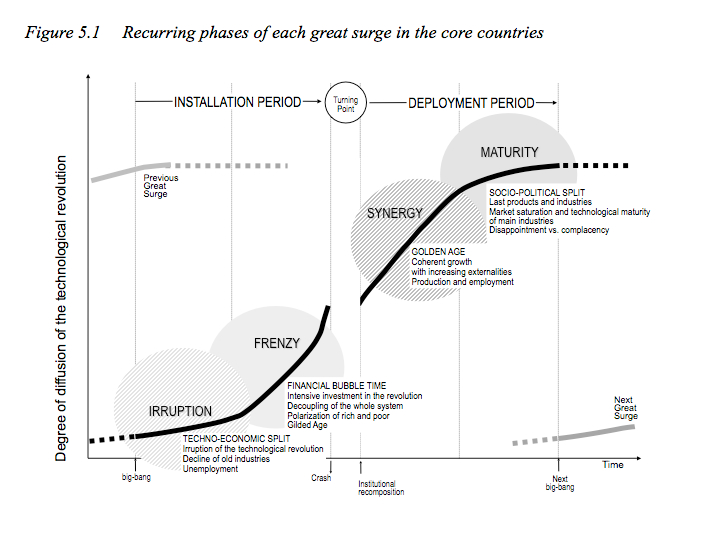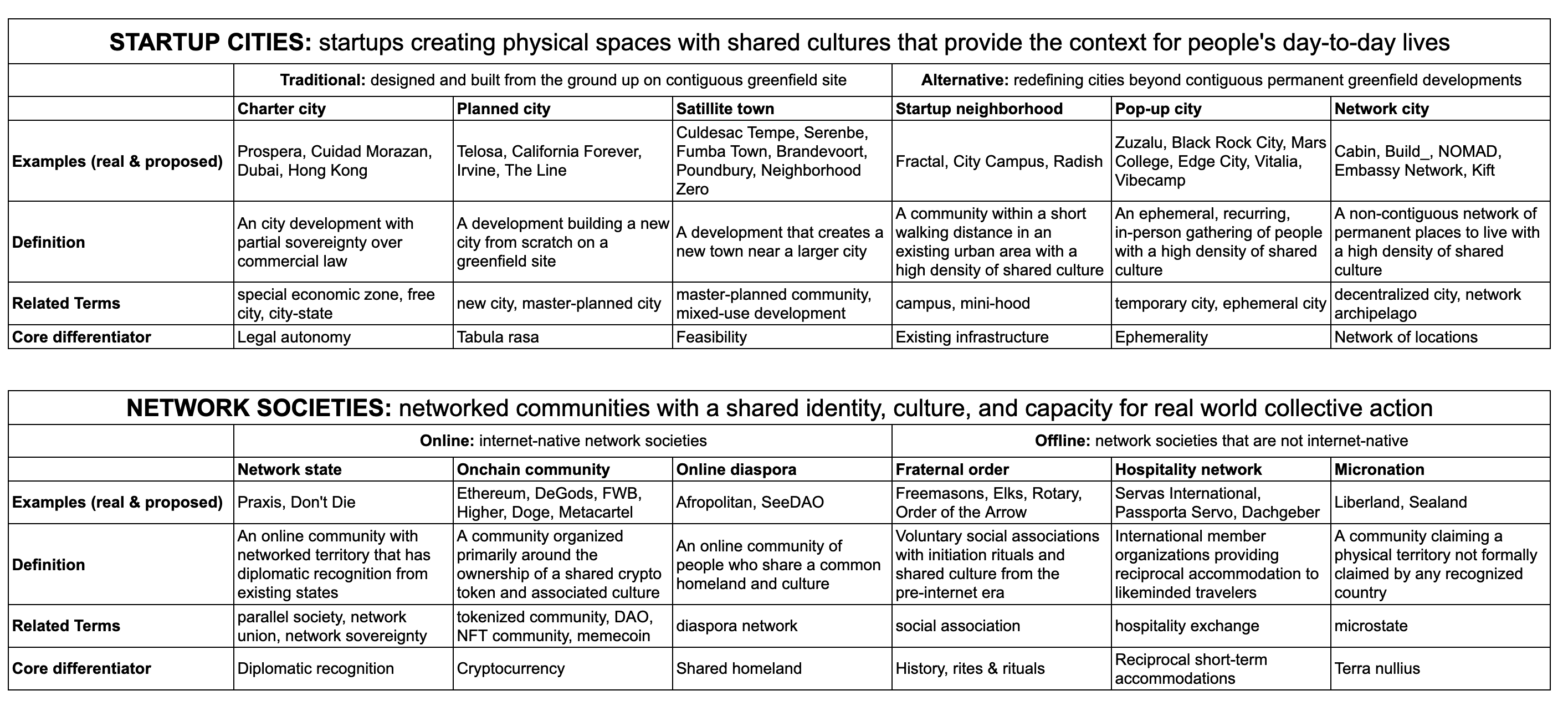Crypto is entering the deployment phase

A turning point towards coherent growth and institutional recomposition
One of the best macro frameworks for understanding the evolution of technologies is Carlota Perez's "Techno-Economic Paradigm Shifts". It charts the S-curve of new technologies through periods of (1) creation of the new technology, (2) frenzied financial bubble, (3) golden age of productivity, (4) maturation. The first two phases, called the Installation Period, end in a financial crash. From the ashes of the crash, institutional recomposition slowly emerges.

Crypto markets have become accustomed to periods of frenzy, and people speak of crypto as a cyclical asset. As you can see in this log-scale chart, bitcoin has gone through four "cycles" of exponential growth and collapse—in 2011, 2013, 2017, and 2021:

Crypto is a financial technology, so it is particularly sensitive to these cycles (which explains why there have already been 4 of them in the first 15 years of its existence). This pattern has led people to believe that we are on the verge of a fifth cycle, since they tend to happen every 2-4 years, and it's now been 3 years since the 2021 frenzy. And it's definitely possible that this 5th cycle is underway, as prices have climbed back up from the 2022 lows and ETFs breath new capital into major crypto assets.
But it also seems possible that the 2022 collapse was a turning point. It was the first crypto cycle that affected the mainstream. In early 2022, everyone from taxi drivers to your mom was buying crypto. By late 2022, FTX had gone from Super Bowl commercials to fraud charges. This cycle was not like the others.
Now it's 2024, and while memecoins are having a moment, it's a pretty contained frenzy of speculation, limited to diehard crypto degens. The normies, who got burned in 2022 buying late cycle PFPs and shitcoins, are not showing up for another round. Crypto will always have some degree for frenzied speculation, but what if the next cycle is going to look different? What if we are now crossing the chasm into the Deployment Phase?
The Deployment Phase, in Perez's model, is marked by an institutional recomposition, where raw financial speculation is replaced by coherent growth, production capital, and political regulation. It is a slower, longer, and ultimately bigger process than what came during the frenzy period.
We are starting to see some signs of an institutional recomposition and deployment phase:
- US dollar denominated stablecoins have grown into a $160 billion market
- Approved Bitcoin and Ethereum ETFs as a bridge between the old and new financial systems
- Bipartisan support for legislation that finally clarifies the use and regulation of tokens
- Nation states holding Bitcoin on their balance sheets
- Growth in DePIN (decentralized physical infrastructure) and RWAs (onchain real world assets)
- Low cost, high throughput blockspace on Solana and Ethereum L2s
- Strong consumer experiences like Farcaster and Daimo that abstract away most of the direct crypto interactions, but are still built on sufficiently decentralized rails
Perez calls this moment, between the financial speculation collapse and the period of synergistic deployment, the Turning Point. These last few weeks in America, as the Ethereum ETF was approved, FIT21 passed congress, and the presidential campaign suddenly featured crypto front-and-center, have felt like a Turning Point. Crypto is an inherently American technology: the ideals of freedom and participatory governance are baked into its core. If the United States can lead the way in bringing this new financial system into a productive relationship with the old one, it could help usher in a golden age of technological deployment. What would this look like?
The obvious answers are: more of what's already working. Global stablecoin settlement as an alternative to wiring money. Inflows of traditional financial assets to crypto ETFs. Nation states buying bitcoin. Continued growth in DePIN and onchain RWAs. Consumer crypto applications people want to use.
But a true Deployment Phase will slowly bring about a deeper recomposition of existing institutions. This phase is not just about economic changes, it is about social changes. If we are on this trajectory, the end state will not just be a reconciling of traditional and onchain finance. It will also be a reconciling of traditional and online/onchain culture and society. While it's early, we are starting to see versions of startup societies emerge online and merge with the real world.
Here's a taxonomy of startup societies—in particular, the "alternative startup city" and "online network society" models provide the most compelling examples of where we are headed:

These emerging network cities and societies use blockchains for social identity, membership, reputation, governance, and financial management. They operate parallel societal infrastructure outside of governments, banks, and other traditional institutions. They are building new communities and cultures that bridge the gap from the virtual and ephemeral to the physical and permanent.
Cabin is building a network city: a global network of local neighborhoods where we live near friends and family. We coordinate the network online and onchain, but the focus of our efforts is in our local neighborhoods, where we turn our friends into neighbors and our neighbors into friends. We believe that this type of locally-embedded, bottom-up parallel society is the ultimate manifestation of the Deployment Phase of the internet and blockchains.
Perez's framework is not an inevitability. If the US fails to continue moving in the direction of nonpartisan regulatory support and clarity for the industry, we will continue to see the issues that have plagued mainstream adoption and the Deployment Phase will fester. Regulatory (as well as technical, practical, and product) limitations must be overcome in order to have network cities and societies that people can benefit from. And even if we overcome these challenges, it won't happen overnight: it usually takes 10-15 years after the Turning Point to fully deploy new technologies into every day life. But societies don't form overnight either—if we are serious about breathing freedom, trust, and life back into our decaying institutions, we need to get started now.




